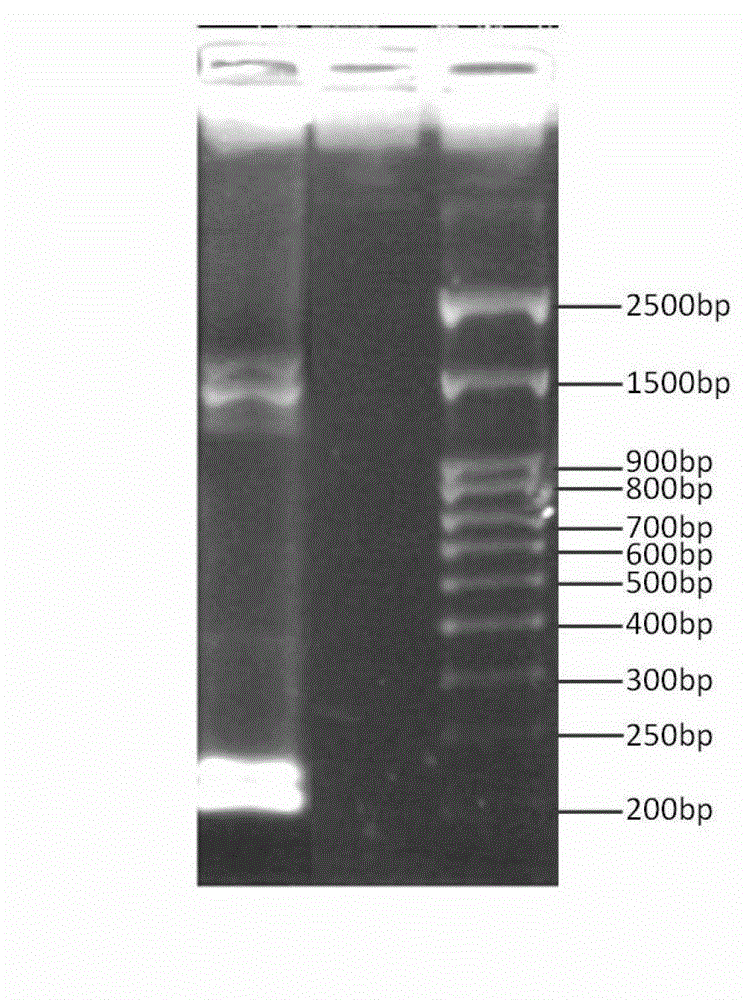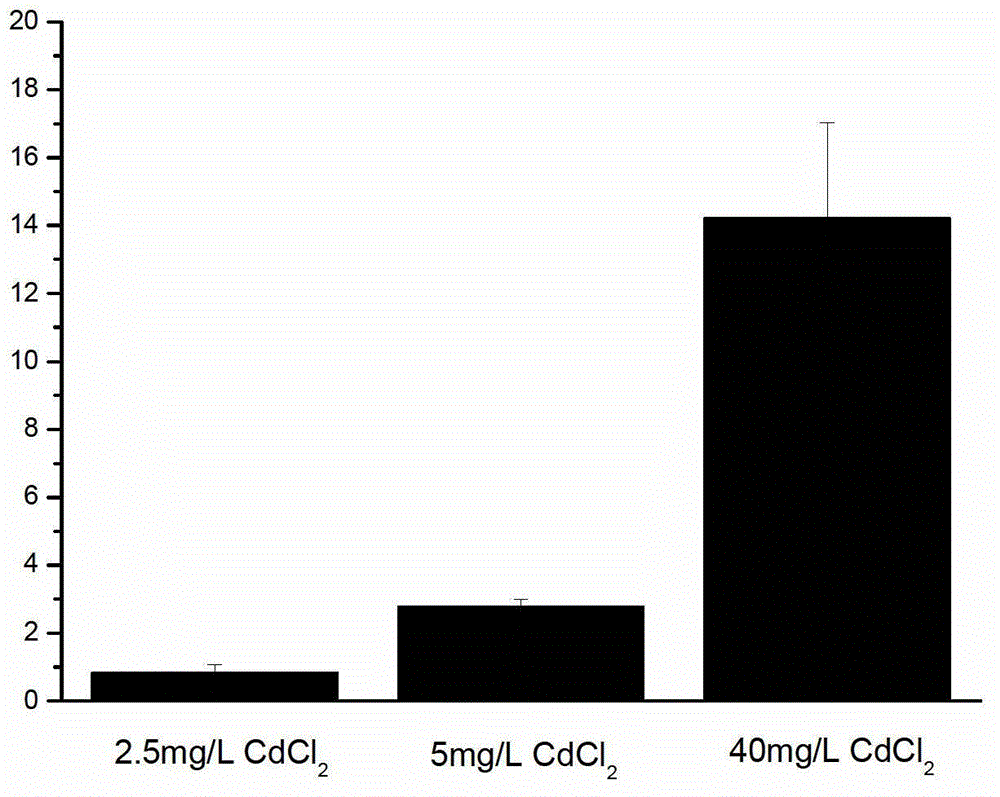Hyperaccumulating black-nightshade metallothionein like (MT-L2) gene sequence and cloning method thereof
A technology for metallothionein and hyper-accumulating plants, which is applied in the field of hyper-accumulating plant metallothionein (MT-L2) gene sequence and its cloning, and can solve problems such as unclear mechanism
- Summary
- Abstract
- Description
- Claims
- Application Information
AI Technical Summary
Problems solved by technology
Method used
Image
Examples
Embodiment 1
[0018] Solanum nigrum MT-L2a gene is shown in SEQ ID NO.1:
[0019] atgtcttgct gtggaggaag ctgtggctgt ggatctggct gcaagtgcgg cagtggctgtggaggatgtg ggatgtaccc tgacttggag agcaccacta cctttaccat cattgagggtgttgcaccta tgatgaacta tggaaaggtt gagggaggac ctaagaatgc aacagaaggtggaaatggct gcaaatgtgg atcaatctct agaggatccc cgggtaccga gctcgaatcgtaa
[0020] (a) Sequential features:
[0021] ●Length: 243bp1-242 nucleotides
[0022] ●Type: Nucleotide sequence
[0023] ●Chain type: single chain
[0024] ●Topological structure: linear
[0025] (b) Molecule type: double-stranded DNA
[0026] (c) Assumption: No
[0027] (d) Antisense: No
[0028] (e) Original source: Nightshade
[0029] Solanum nigrum MT-L2b gene is shown in SEQ ID NO.2:
[0030] atgtcttgct gtggaggaag ctgtggctgt ggatctggct gcaagtgcgg cagtggctgtggaggatgtg ggatgtaccc tgacttggag agcaccacta cctttaccat cattgagggtgttgcaccta tgatgaacta tggaaaggtt gagggaggac ctaagaatgc aacagaaggaggaaatggct gcaaatgtgg atcaatcgtc gacctgcagg catgcaagct t...
Embodiment 2
[0040] The cloning method of embodiment 2 Solanum nigrum MT-L2 gene
[0041] The method for cloning the above-mentioned MT-L2 gene from Solanum nigrum is:
[0042] (1) Total RNA was extracted from the leaves of the fresh hyperaccumulator plant Solanum nigrum;
[0043] (2) Using total RNA as a template, the first-strand cDNA was synthesized using reverse transcriptase AMV and random primers (Random Primers, Invitrogen, USA);
[0044] (3) Using the synthesized first-strand cDNA as a template, PCR amplification was carried out using degenerate primers MT-L2-F and MT-L2-R, and the size of the amplified fragment was about 200bp (see figure 1 );
[0045] (4) After cloning the PCR product into the pMD-18T vector, multiple positive clones were taken and sequenced to finally obtain the gene sequences MT-L2a and MT-L2b of the super-enriched plant Solanum nigrum type 2 metallothionein.
[0046] Wherein said primers include:
[0047] MT-L2-F: 5'-ATGTCTTGCTGTGGAGGAAN-3'
[0048] MT-L2...
Embodiment 3
[0101] Example 3 Expression of Hyperaccumulator Solanum nigrum Type 2 Metallothionein under Different Concentrations of Cd Stress
[0102] Solanum nigrum seedlings shown in the above sequence table SEQ ID NO.1 or SEQ ID NO.2 were planted in soil with different concentrations of Cd (2.5mg / kg, 5mg / kg and 40mg / kg) and without Cd In the middle to mature stage, the total RNA of Solanum nigrum leaves in different treatment groups (2.5mg / kg, 5mg / kg and 40mg / kg) and the control group (without Cd treatment) was collected. For the extraction method of total RNA, refer to the above examples, and use fluorescence quantification A PCR instrument (ABI Step-One Plus Real Time PCR System, USA) was used for differential expression analysis, and quantitative PCR primers were MT-L2-F and MT-L2-R. The results showed that Cd stress treatment could significantly induce the expression of MT-L2, which was 0.8 times, 2.8 times and 14.2 times that of the control, respectively (see figure 2 ), which i...
PUM
| Property | Measurement | Unit |
|---|---|---|
| Molecular weight | aaaaa | aaaaa |
| Molecular weight | aaaaa | aaaaa |
Abstract
Description
Claims
Application Information
 Login to View More
Login to View More - R&D
- Intellectual Property
- Life Sciences
- Materials
- Tech Scout
- Unparalleled Data Quality
- Higher Quality Content
- 60% Fewer Hallucinations
Browse by: Latest US Patents, China's latest patents, Technical Efficacy Thesaurus, Application Domain, Technology Topic, Popular Technical Reports.
© 2025 PatSnap. All rights reserved.Legal|Privacy policy|Modern Slavery Act Transparency Statement|Sitemap|About US| Contact US: help@patsnap.com



